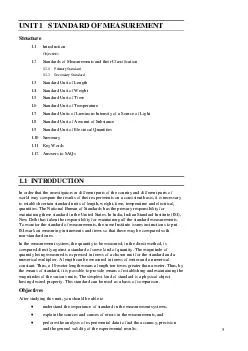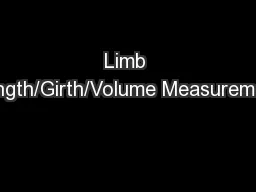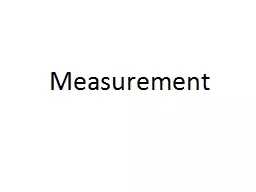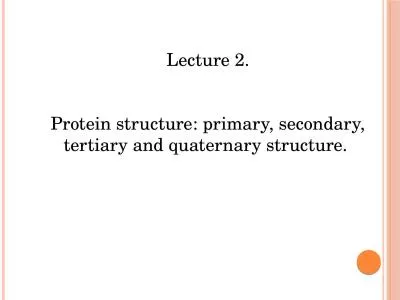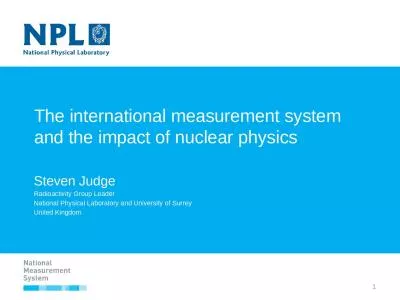PDF-Standard of Measurements UNIT STANDARD OF MEASUREMENT Structure Introduction Objectives
Author : danika-pritchard | Published Date : 2014-12-16
1 INTRODUCTION In order that the investigators in different parts of the country and di fferent parts of world may compare the results of their experiments on a
Presentation Embed Code
Download Presentation
Download Presentation The PPT/PDF document "Standard of Measurements UNIT STANDARD ..." is the property of its rightful owner. Permission is granted to download and print the materials on this website for personal, non-commercial use only, and to display it on your personal computer provided you do not modify the materials and that you retain all copyright notices contained in the materials. By downloading content from our website, you accept the terms of this agreement.
Standard of Measurements UNIT STANDARD OF MEASUREMENT Structure Introduction Objectives: Transcript
Download Rules Of Document
"Standard of Measurements UNIT STANDARD OF MEASUREMENT Structure Introduction Objectives"The content belongs to its owner. You may download and print it for personal use, without modification, and keep all copyright notices. By downloading, you agree to these terms.
Related Documents

